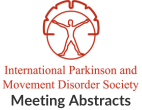Concurrent SCA3 and SCA10 in a young man with ataxia and prominent dystonia
Objective: To describe a case of a man with pathogenic repeat expansions in both ATXN3 and ATXN10. Background: SCA3 is caused by abnormal polyglutamine repeat…Upward Gaze Palsy in SCA3: a valuable semiological sign
Objective: Evaluate the prevalence of upward gaze palsy (UGP) and investigate its useful in assisting the clinical differentiation of SCAs. Background: Spinocerebellar ataxias (SCAs) represent…Plasma biomarker quantification in SCA3 using the Neurology 4-PLEX A kit and the Simoa technology
Objective: We present the results of plasma biomarker quantification in a cohort of spinocerebellar ataxia type-3 (SCA3) carriers using a Simoa assay. Background: Development of…SCA48: Ataxia Plus Chorea in a New Spanish Family
Objective: To describe a new family with Spinocerebellar Ataxia 48 (SCA48) characterized by ataxia and mild chorea as the most prominent initial symptoms as well…Clinical and genetic heterogeneity in Indian subcontinent patients with Autosomal Dominant Spinocerebellar Ataxia 42
Objective: We describe the case of a family of 2 female siblings of Indian subcontinent with genetically proven SCA 42 Background: Spinocerebellar ataxia (SCA) are…Prospective study of cognition in SCA2
Objective: Evaluate prospectively cognitive dysfunction in subjects with SCA2 using Mini Mental Examination (MMSE) and Montreal Cognition Assesment (MOCA), looking for correlation between cognitiion and motor…Gait in Spinocerebellar Ataxia Type12 (SCA-12)
Objective: The aim of our study was to evaluate the spatial and temporal parameters of gait in SCA12 patients and to compare it with healthy…Need of next generation sequencing technology to de-convolute autosomal recessive cerebellar ataxias in India
Objective: Comparison of two next generation platform to screen ARCA patients in Indian population Background: India is deficient with the molecular screening of the ARCAs.…Clinico-genetic correlation in 102 Spinocerebellar Ataxia Type 12 (SCA 12) patients
Objective: To report the phenotype among the largest number of genotypically confirmed SCA 12 patients. Background: SCA12 is an autosomal dominant cerebellar ataxia (ADCA) caused…Classification of spinocerebellar degeneration based on ratio of brainstem white matter to cerebellar gray matter by voxel-based morphometry
Objective: We examined the usefulness of voxel-based morphometry (VBM) analysis in auxiliary diagnosis of cases with spinocerebellar degeneration, including those with MSA-C. Background: In Japan,…
- « Previous Page
- 1
- …
- 8
- 9
- 10
- 11
- 12
- …
- 16
- Next Page »
